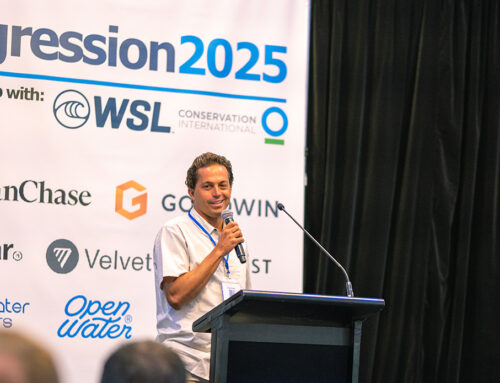While institutions own 28% of Tourism Holdings Limited (NZSE:THL), individual investors ar
June 28, 2025
-
Significant control over Tourism Holdings by individual investors implies that the general public has more power to influence management and governance-related decisions
-
50% of the business is held by the top 18 shareholders
A look at the shareholders of Tourism Holdings Limited (NZSE:THL) can tell us which group is most powerful. With 49% stake, individual investors possess the maximum shares in the company. In other words, the group stands to gain the most (or lose the most) from their investment into the company.
And institutions on the other hand have a 28% ownership in the company. Institutions will often hold stock in bigger companies, and we expect to see insiders owning a noticeable percentage of the smaller ones.
Let’s take a closer look to see what the different types of shareholders can tell us about Tourism Holdings.
See our latest analysis for Tourism Holdings
Institutional investors commonly compare their own returns to the returns of a commonly followed index. So they generally do consider buying larger companies that are included in the relevant benchmark index.
We can see that Tourism Holdings does have institutional investors; and they hold a good portion of the company’s stock. This suggests some credibility amongst professional investors. But we can’t rely on that fact alone since institutions make bad investments sometimes, just like everyone does. If multiple institutions change their view on a stock at the same time, you could see the share price drop fast. It’s therefore worth looking at Tourism Holdings’ earnings history below. Of course, the future is what really matters.
Tourism Holdings is not owned by hedge funds. Lurk Investment Trust is currently the company’s largest shareholder with 12% of shares outstanding. For context, the second largest shareholder holds about 8.2% of the shares outstanding, followed by an ownership of 7.9% by the third-largest shareholder. Additionally, the company’s CEO Grant Webster directly holds 1.2% of the total shares outstanding.
A closer look at our ownership figures suggests that the top 18 shareholders have a combined ownership of 50% implying that no single shareholder has a majority.
While it makes sense to study institutional ownership data for a company, it also makes sense to study analyst sentiments to know which way the wind is blowing. There are a reasonable number of analysts covering the stock, so it might be useful to find out their aggregate view on the future.
While the precise definition of an insider can be subjective, almost everyone considers board members to be insiders. The company management answer to the board and the latter should represent the interests of shareholders. Notably, sometimes top-level managers are on the board themselves.
I generally consider insider ownership to be a good thing. However, on some occasions it makes it more difficult for other shareholders to hold the board accountable for decisions.
We can see that insiders own shares in Tourism Holdings Limited. As individuals, the insiders collectively own NZ$9.6m worth of the NZ$493m company. Some would say this shows alignment of interests between shareholders and the board. But it might be worth checking if those insiders have been selling.
With a 49% ownership, the general public, mostly comprising of individual investors, have some degree of sway over Tourism Holdings. While this group can’t necessarily call the shots, it can certainly have a real influence on how the company is run.
With a stake of 8.2%, private equity firms could influence the Tourism Holdings board. Sometimes we see private equity stick around for the long term, but generally speaking they have a shorter investment horizon and — as the name suggests — don’t invest in public companies much. After some time they may look to sell and redeploy capital elsewhere.
We can see that Private Companies own 13%, of the shares on issue. It might be worth looking deeper into this. If related parties, such as insiders, have an interest in one of these private companies, that should be disclosed in the annual report. Private companies may also have a strategic interest in the company.
While it is well worth considering the different groups that own a company, there are other factors that are even more important. For example, we’ve discovered 5 warning signs for Tourism Holdings (2 make us uncomfortable!) that you should be aware of before investing here.
If you are like me, you may want to think about whether this company will grow or shrink. Luckily, you can check this free report showing analyst forecasts for its future.
NB: Figures in this article are calculated using data from the last twelve months, which refer to the 12-month period ending on the last date of the month the financial statement is dated. This may not be consistent with full year annual report figures.
—
Investing narratives with Fair Values
-
A case for TSXV:USA to reach USD $5.00 – $9.00 (CAD $7.30–$12.29) by 2029.
By Agricola – Community ContributorFair Value Estimated:
CA$12.29 · 0.9% Overvalued -
DLocal’s Future Growth Fueled by 35% Revenue and Profit Margin Boosts
By WynnLevi – Community ContributorFair Value Estimated:
$195.39 · 0.9% Overvalued -
Historically Cheap, but the Margin of Safety Is Still Thin
By Mandelman – Community ContributorFair Value Estimated:
SEK232.58 · 0.1% Overvalued
—
Have feedback on this article? Concerned about the content? Get in touch with us directly. Alternatively, email editorial-team (at) simplywallst.com.
This article by Simply Wall St is general in nature. We provide commentary based on historical data and analyst forecasts only using an unbiased methodology and our articles are not intended to be financial advice. It does not constitute a recommendation to buy or sell any stock, and does not take account of your objectives, or your financial situation. We aim to bring you long-term focused analysis driven by fundamental data. Note that our analysis may not factor in the latest price-sensitive company announcements or qualitative material. Simply Wall St has no position in any stocks mentioned.
Search
RECENT PRESS RELEASES
Related Post




